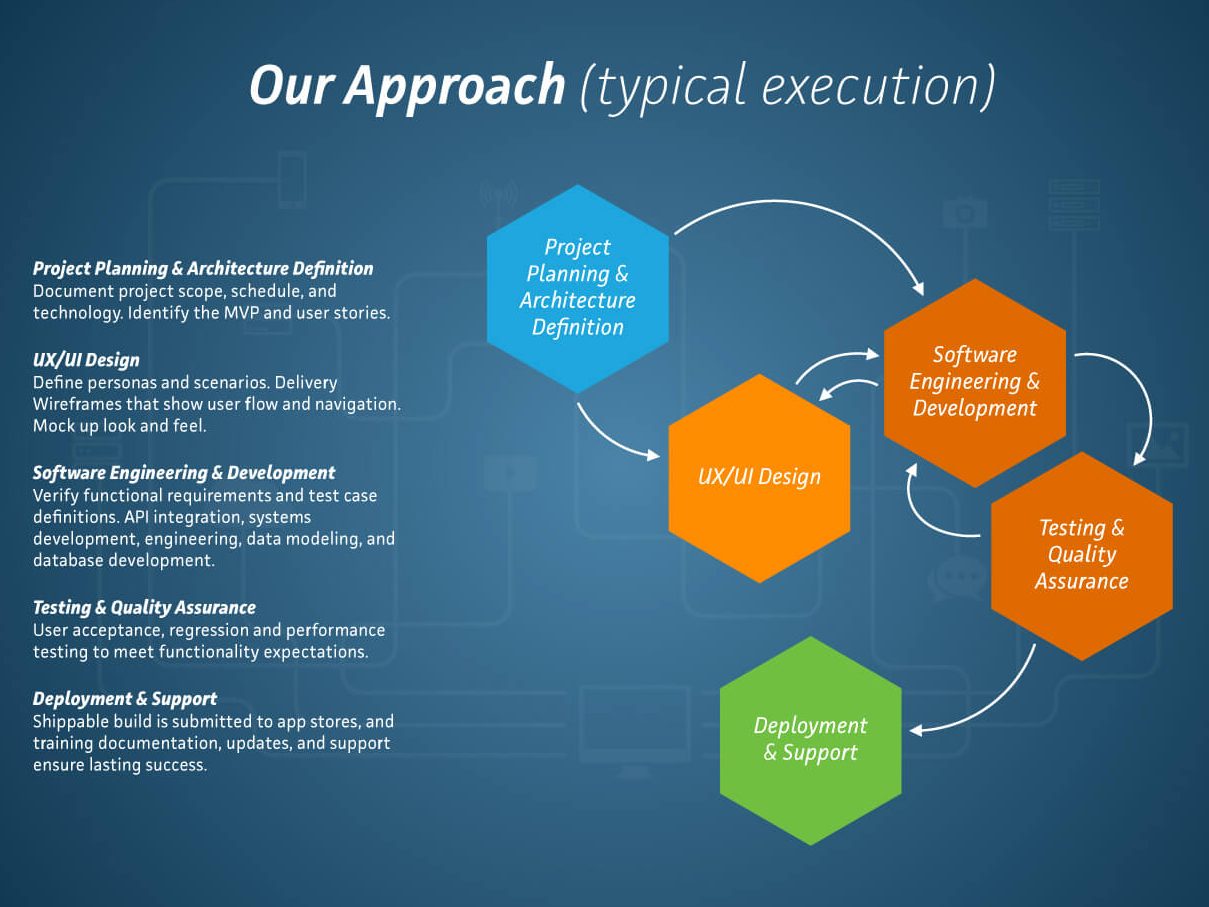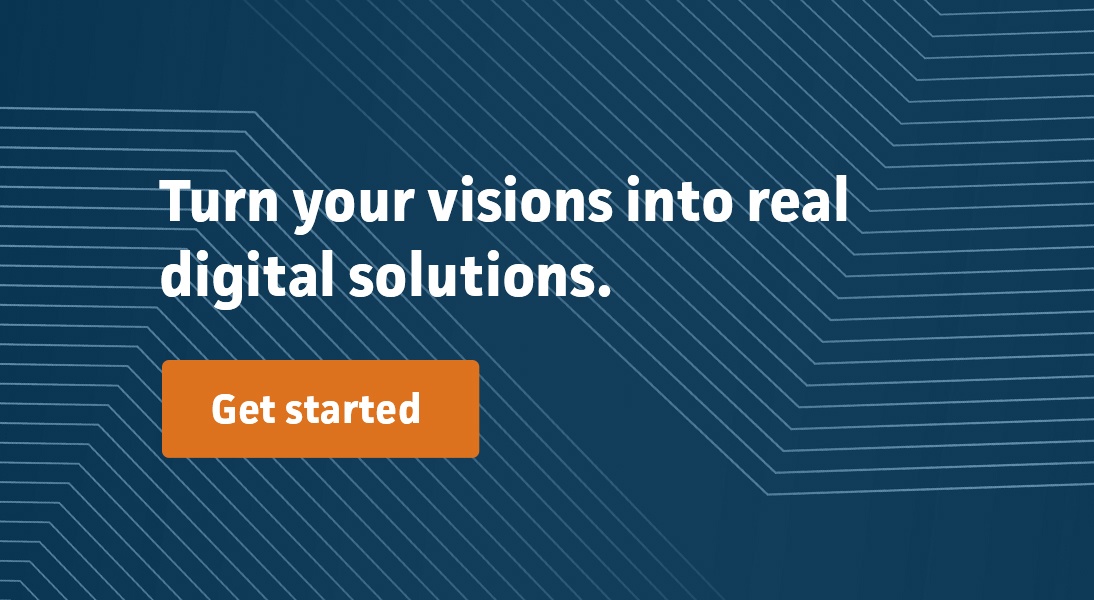Digital product development is the process of creating products or services such as software, mobile and web apps, and online tools. Launching a digital product can be both an exciting and daunting process. The digital product development lifecycle can be divided into five phases that outline the process from the planning phase through support:
- Project Planning & Architecture Definition
- User Experience/User Interface (UX/UI) Design
- Software Engineering & Development
- Testing & Quality Assurance
- Deployment & Support
In each phase of the process, different stakeholders come together and collaborate to enhance the product development process. As the phases progress, stakeholders can evaluate feedback from customers and decision makers in order to ensure that quality standards are met.

Project Planning & Architecture Definition
The first stage of digital product development is discovery. It’s important to take the time to clearly define the project goals, features, user needs and technical architecture before progressing further into creating your product. Market research is also conducted during this phase.
The delivery team needs to gain an intimate understanding of the needs of users and the tasks they will be expected to take. The discovery effort is typically a single day workshop, which helps focus on the most important features to include in the first iteration or minimal viable product. This activity drives the development of use cases and user stories.
Project planning defines the priorities, timeline, communications processes, project review schedule and roles associated with the overall project. The planning and architecture work includes the initial prioritization and categorization of the functional needs and the technical architecture of the digital product along with a sprint plan.
User Experience/User Interface (UX/UI) Design
The next stage of digital product development is UX/UI design. This is the process of creating an engaging and intuitive interface for the product. User experience design includes usability research which focuses on stakeholder identification, persona characteristics and scenario identification. Smashing Magazine highlights some of the frustrations users experienced in recent testing.
Experience strategy and information architecture result in the definition of the user flow and navigation of the application in the form of wireframes that illustrate a top task flow or usage scenario. A flow chart or navigation model is created so that the possible paths for the user within defined roles or states can be visualized. The wireframe and navigation model are core to documenting key views and interactions that the developers must ultimately create.
High fidelity screen mockups and prototypes are also created during this phase to further refine requirements and provide software developers the assets they need to bring the solution to life.
Software Engineering & Development
Application development is a crucial step where the vision of your product really starts to become a reality. In this phase the functional requirements and user stories/use cases are verified. The test cases are defined and the systems architecture development and integration is completed. Each sprint provides an opportunity to validate user thinking and testing.
Testing & Quality Assurance
Testing and quality assurance are vital components in every development cycle. This phase includes formalizing test plans, quality assurance and regression testing, and user acceptance testing. Once all tests are complete, the next step is product deployment. Deployment marks the final stage of the entire product development process. It’s important to accompany this step with a well thought out marketing strategy that will ensure your product reaches its target audience and takes advantage of every available opportunity for success.
Deployment & Support
Your digital product will require continued maintenance and support. It’s important to remain invested and solicit feedback from users to create a roadmap for future upgrades. This can include taking steps to fix bugs, enhance user experience, or add features. Regular upkeep is necessary for customers and employees to stay satisfied and continue using and benefitting from your product long term.
A great digital product can help a business stand out in the marketplace, increase their user base, build credibility and trustworthiness, and generate more revenue over time. Mission Data has been creating digital products for decades, helping clients enhance their operation and grow revenue. Let’s connect if you need support or wish to discuss a project.



